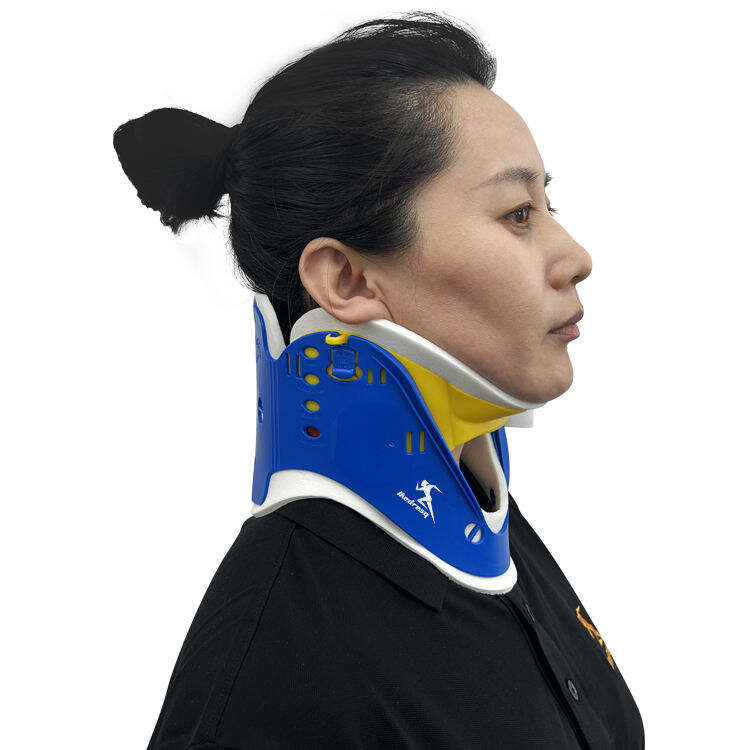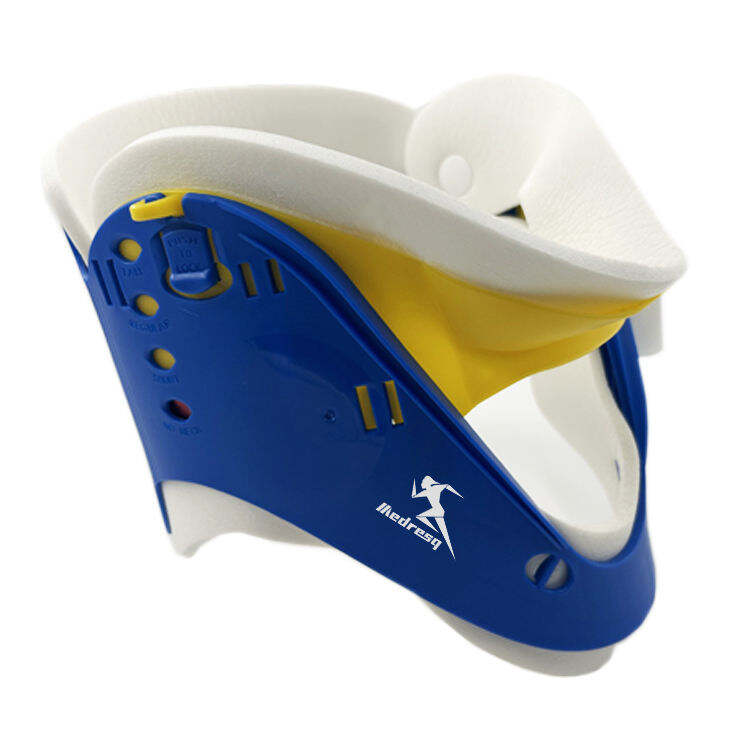The cervical collar fit and stability is an essential part of pre-hospital and emergency management, particularly in the case of active or agitated patients. A collar that does not slip, chafes or immobilizes can weaken spinal integrity and result in additional injury. Striking the right balance between total immobilization and comfort of the patient is a big challenge posed by medical personnel. This blog will provide information on the determinants of collar performance in dynamic scenarios.
How Neck Movement Affects Collar Retention
One of the most widespread myths is that cervical collar is a rigid and fixed device. Quite on the contrary, patients are seldom perfectly motionless. Agitation, pain, uneven surface transportation or even voluntary movement impose a great force that tests the collar retention.
Too much jaw motion, swallowing or speech may make the mandibular and occipital supports loose. In a more dramatic fashion, trying to flex, stretch or even twist the neck actively strains the collar structure. The poorly fitted collar can either roll up, pierce the clavicles or jaw, or slide to the side, thus not keeping the spine in neutral position. This explains why the initial fit needs to be precise; a loose collar will slide very easily, and a tight collar may become a pressure point and source of discomfort which makes the patient move against it, making the instability it is supposed to prevent even worse.

Material Flexibility vs. Structural Support
Not all cervical collars are created equal and the philosophy behind the design of the collars directly influences its performance in active patients. The main conflict is a conflict between matter and the solidity of structure.
Other designs lay stress on hard plastic designs with hard padding. These perform exceptionally well in reduction of gross movement and offering unambiguous structural support. Nevertheless, it is a limitation because their rigidity might not be suitable when the anatomy of the patient does not fit the shape of the collar, leaving it with gaps and pressure points. On the other hand, other designs are made of more conformable materials. These are able to better conform to individual anatomical lines to better overall fit and comfort, potentially leading to greater patient compliance. The trade-off which may occur is the possibly diminished absolute immobilization against the greatest forces. The best is to combine them: a strict internal structure to prevent motion and soft, adaptive components at the contact points to provide a secure and stable fit on a moving patient.
Evaluating Comfort and Immobilization Balance
When it comes to any cervical collar that is supposed to be worn continuously throughout the transportation process, the dynamics between the comfort and effective immobilization is in the front line. A collar that is very uncomfortable will make the patient subconsciously or consciously oppose it by vigorously moving about. This does not only kill the mission of the device, but it is also likely to make a person more anxious and stressed.
To determine this balance, there are a few factors that have to be taken into consideration. The padding should be adequate to spread the pressure without being compressible to permit movement. The materials used on the skin contact should be able to control the moisture to avoid skin breakdown. The chin panel should be in such a way that it supports without covering or putting undue pressure on the larynx. Most importantly, the collar is required to ensure that the head is in a true neutral position without strapping the jaw or over-stretching the neck. An effective collar, which is comfortable and gives the necessary feeling of safety can make a major difference in patient compliance, resulting in increased general stability and immobilization during the critical transport stage.
Finally, an active patient needs more than a stiff splint to manage him, it has to be a dynamic system that incorporates sound design, the right materials, and above all, a careful fit so that it maintains him safe and stable between scene and facility.
 EN
EN
 FR
FR
 DE
DE
 IT
IT
 JA
JA
 KO
KO
 RU
RU
 ES
ES
 AR
AR
 BG
BG
 HR
HR
 DA
DA
 NL
NL
 FI
FI
 EL
EL
 NO
NO
 PL
PL
 PT
PT
 RO
RO
 SV
SV
 TL
TL
 ID
ID
 SR
SR
 UK
UK
 VI
VI
 SQ
SQ
 TH
TH
 TR
TR
 AF
AF
 MS
MS
 CY
CY
 IS
IS
 HY
HY
 AZ
AZ
 KA
KA
 MN
MN
 MY
MY
 KK
KK
 UZ
UZ
 CS
CS



